By Emma Blane |
03 Sep 2025
Miniature ‘Peintresses’ of the Exiled Stuart Court
Under James II, the family lived in France. Upon his death in 1701, his eleven-year-old son, James Francis Edward Stuart (1688-1766), was declared the King of England by Louis XIV. In England and Scotland, he became known as ‘The Pretender’ [1] by Whigs, and ‘The King Over the Water’ by his Jacobite supporters. In 1718, following an unsuccessful invasion of Scotland to reclaim the throne in 1715, James moved his family to Italy, where they settled in Rome. It was here that his two sons, Charles Edward Stuart (1720-1788) and Henry Benedict Stuart (1725-1807), were born. It was Charles who gained the most attention out of the two sons, becoming known as ‘The Young Pretender’ by the Whigs and ‘Bonnie Prince Charlie’ by the Jacobites. He would remain on the continent throughout his life, except for an unsuccessful attempt to invade the United Kingdom in 1745. His brother, Henry, turned to Religion instead of royalty and became a Cardinal, one of the longest serving in history. Neither brother had legitimate children [2], and the Stuart line ended with the death of Henry in 1807.
During this period of exile, portraiture became an important mode through which the Stuarts could exert and maintain their influence amongst Jacobite circles in England and Scotland. There had been six monarchs of England and Scotland, and then the United Kingdom (after the Act of Union under Queen Anne (1702-1714)), during this time. Portrait miniatures especially became an important method through which visual representations of the Stuarts could be brought into England, given their size and portability. Recently, a portrait miniature of the Old Pretender was sold through The Limner Company. The portrait of James has been attributed to Anne Marie Belle (Née Chéron) (1663-1718), which instantly sheds light on a particular fact about art in the court of the exiled Stuarts: the presence of a distinctly large number of female miniaturists being patronised by the court.
The fact that these artists, each discussed in more detail below, were working for the exiled court is not unknown, and their work is recorded in both the Stuart Papers [3] and more recent secondary literature on the subject, such as the works by Edward T Corp [4]. However, there has been no writing dedicated only to the female artists working within the court. This is by no means a comprehensive study of these artists, but an attempt to dedicate more time to researching their lives and works.
N.B. I will refer to James Francis Edward Stuart as ‘The Old Pretender’, and his son, Charles, as ‘The Young Pretender’ throughout the blog, for ease.
Female miniature painters at the Stuart Court in France
Upon their exile from England, James II and the (now ex-) Queen Consort Mary of Modena were welcomed to France by James’s 2nd Cousin, Louis XIV. Known as ‘the Sun King’, they arrived at an extravagant and probably somewhat overwhelming court. Distanced from Britain, it was important for the exiled rulers to establish some authority in their new home. Corp (2001) has argued that some of the first portraits produced for the exiled court, executed by Nicholas de Largillière (1656-1746) and Benedetto Gennari (1633-1715), were intended to promote a sense of pomp and circumstance, and to prove that James II still meant business [6].
At this point, James Francis (our Old Pretender) was still a baby. He featured in some of these royal portraits, including one by de Largillière (fig.1), in which he is depicted alongside his younger sister, Princess Louise-Maria (1792-1812). In this early period, many of the portraits being commissioned were by these male court artists. However, as the 18th century rolled in, the first female court artists began to appear, following the death of James II in 1701. In the same year, the court painter Alexis-Simon Belle (1674-1734) married Anne Marie Belle (née Chéron) (1663-1718). It is with Chéron that we will begin this brief survey of the female artists at the court and the work they produced.
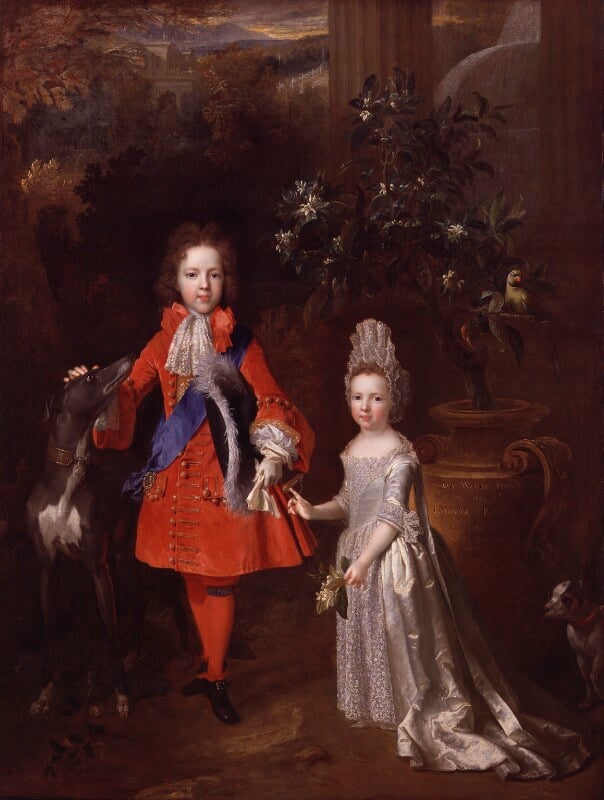
Fig. 1: NICHOLAS DE LARGILLIÈRE (1656-1746), Prince James Francis Edward Stuart; Princess Louisa Maria Theresa Stuart, oil on canvas, 1695. National Portrait Gallery, London, NPG 976.
Anne Chéron (later Belle) (1663-1718)
Very little about the life of Anne is recorded outside of the miniatures that she is known to have painted of the exiled Stuarts. Her maiden name can be connected to the artistic Chéron family. She had at least two siblings, Elizabeth (1648-1711) and Louis (1660-1625), who were successful artists in their own right. Anne likely became involved with the Stuarts when her sister was working for the court of Louis XIV. In the Witt photographic archive, the single image filed under Anne’s name is a portrait of Marie Theresa of Spain (1638-1683), the wife of Louis XIV. Whether or not this portrait was painted by her is up for debate- if it is, it is a very early work painted when Chéron was only twenty. It may have been that this work was part of Anne’s introduction to the Stuarts and encouraged them to commission works from her.
The Limner Company has recently sold a portrait by Anne, of the Old Pretender. It is from circa 1710, and depicts James in armour, wearing the blue sash of the Order of the Garter (the oldest and most senior Order of Chivalry in Britain, to this day). At this point a young gentleman, he is being presented as a figure with real power, just the image which his Jacobite followers would have (hopefully) recognised, and which he wished to express to them.
Most miniatures attributed to Chéron are assumed to be copies of works by her husband. This was a typical practice of the time, and many female artists (as will be exemplified below) would not produce completely original compositions, instead taking elements from the works of their masters or older masters [7].
However, more creativity must be ascribed to Anne than she has already been awarded, given that the miniature recently sold by The Limner Company does not exactly match a portrait painted by her husband. James faces a slightly different direction and has full sleeves of armour, whereas many of the other portraits done by Belle in the period only show him in half sleeves. It is also possible that many more miniatures than those that have currently been attributed to Anne exist. A plethora of records of miniatures from the ‘Circle of Alexis Simon-Belle’ are known, and many of these are comparable to works attributed to Anne. Both wife and husband continued to paint James and his sister into the 1710s, remaining important figures within the artistic scene of the Stuart court in France.
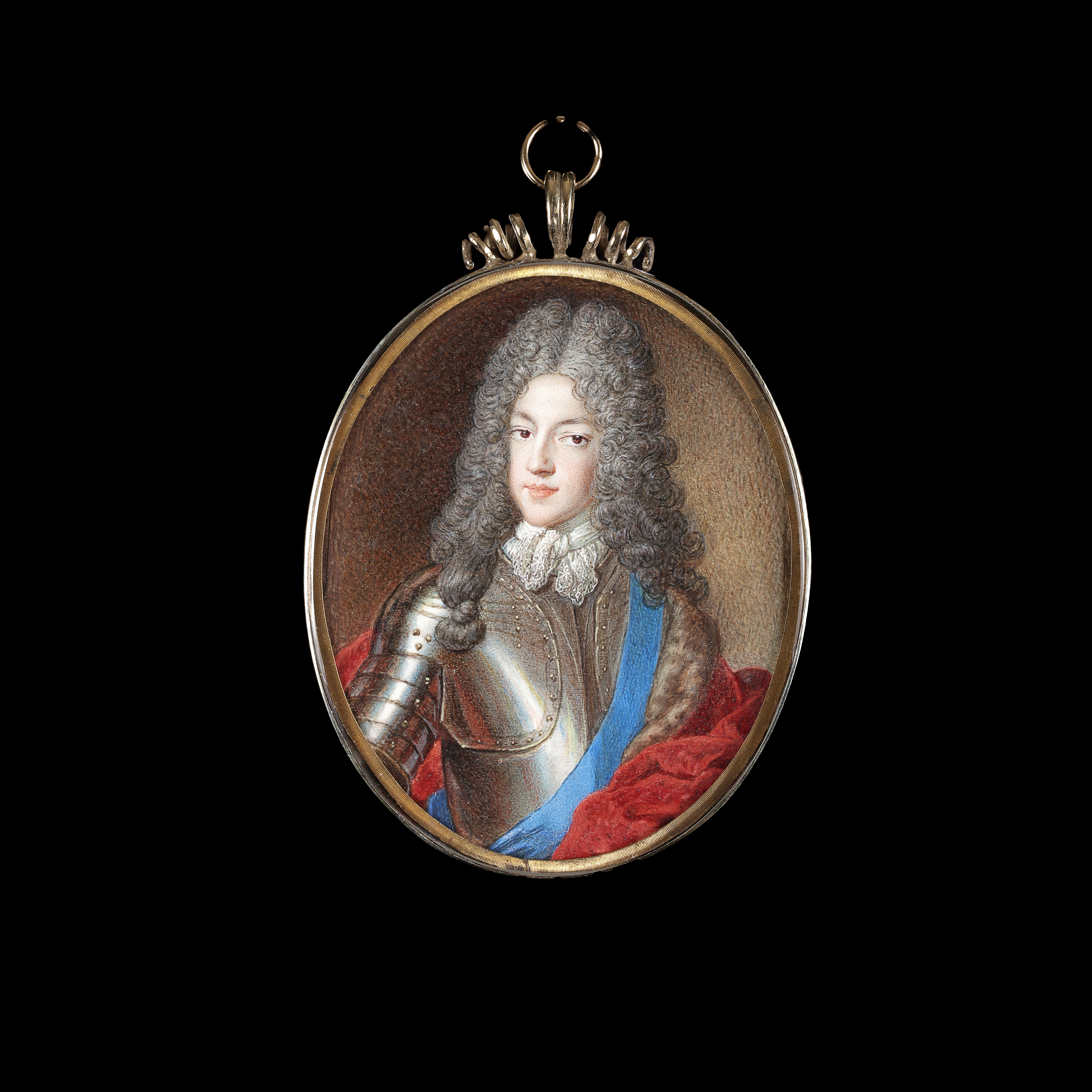
Fig. 2: ANNE MARIE BELLE (NÉE CHÉRON) (1663-1718), Prince James Francis Edward Stuart (1688-1766), 'The Old Pretender', wearing armour, white lace stock and blue sash of the Garter, circa 1710s, Watercolour on vellum, backed with a playing card (clubs), Original sharkskin case with gold pinwork, Oval, 72 mm (2 ⅘ in) high. Previously with the Limner Company.
Jacqueline de la Boissière (fl.1690-1721)
Another, less prolific, female artist from this period is Jacqueline de la Boissière. There are at least three known portrait miniatures painted by de la Boissière. Three of those seen by the author come from 1710, two depicting James and the third a woman, identified at different stages as either James’ sister or his mother. This latter miniature was part of a pair in the collection of the Earl of Howe, and both were sold from the estate together. Historically, it is more likely that a pair of portraits would have been painted of brother and sister, rather than brother and mother, and a visual comparison to a portrait of Louisa by Belle [8] provides evidence that this is likely to be of her, rather than her older mother.
As with Anne Chéron, it seems that de la Boissière was introduced to the Stuarts through the French court. She produced portraits of both King Louis XIV and XV [9] for ‘portrait boxes’. These boxes, and ‘Boîte à portrait’ were particularly popular during the reign of the Sun King and were often painted in enamel, some examples being produced by Petitot (fig. 3) [10]. Though none of the extant examples of works by de la Boissière are in this form, it is possible that they were originally set into boxes, from which they have since been removed and given new frames. Very little else about the life of de Boissière is known, apart from the fact that she is recorded to have been ‘well paid’ in Thieme-Becker [11]. Whether or not this was more or less than her male (or female) contemporaries is unknown.
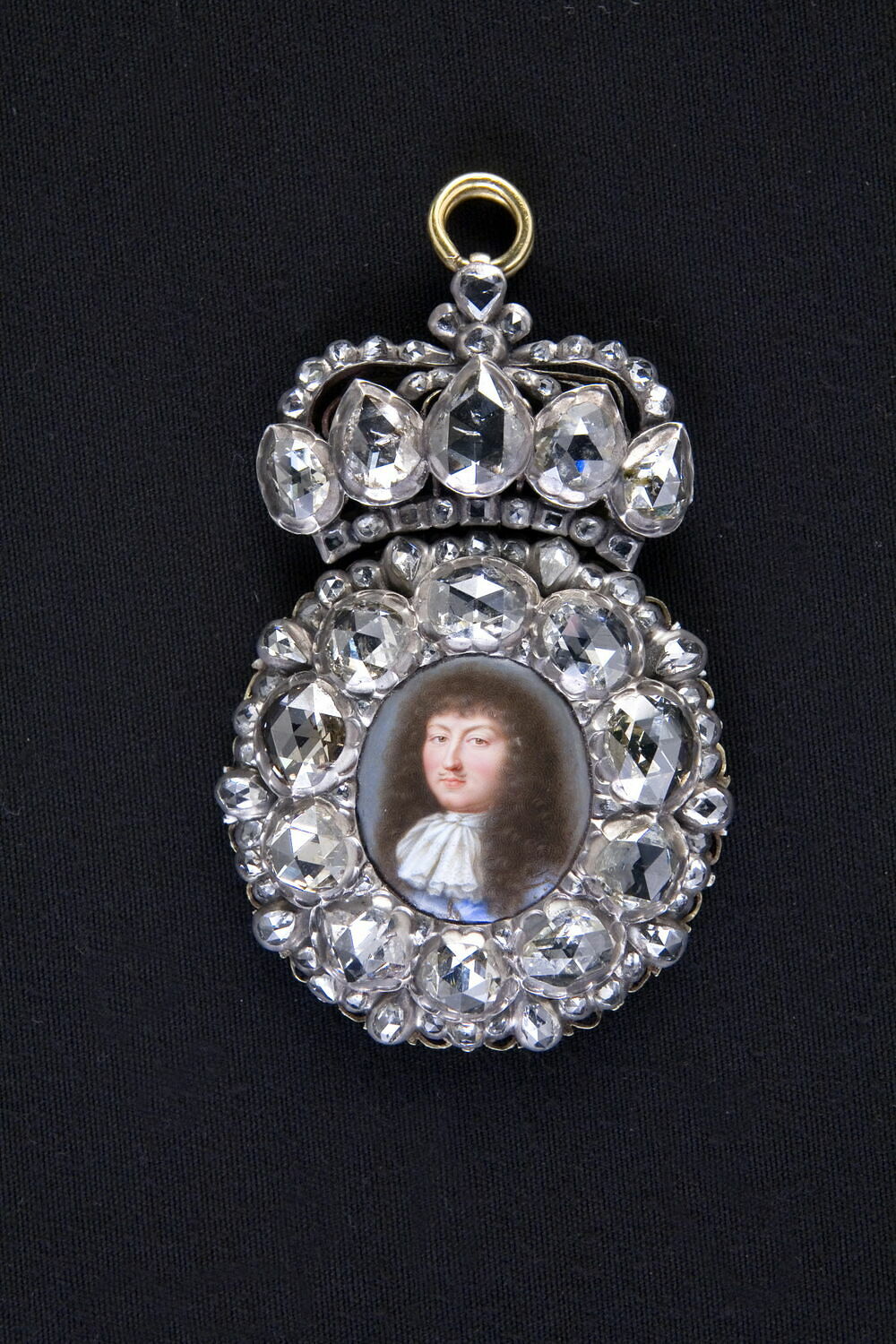
Fig. 3: An example of a ‘Boîte à portrait’, Enamel Portrait by JEAN PETITOT I (1607-1691)
The Stuart Court in Rome (from 1717)
Following the failed Jacobite Rebellion in 1715 and the establishment of a new Anglo-French Alliance in 1716, the Stuart Court was forced to move away from France. By March 1717, they had arrived in Rome and settled in the Palazzo Mutti, which became known as the Palazzo del Rei (or Re).
In 1719, the pretender married Maria Clementina Sobieska (1702-1735), the daughter of the King of Poland, who came to be known by supporters as ‘Our Jacobite Queene’. A year later, in 1720, and following a second failed landing in Scotland, Maria gave birth to her first son, Charles Edward Stuart, later to become known as ‘Bonnie Prince Charlie’, or ‘The Young Pretender’. Five years later, in 1725, he was followed by his younger brother, Henry.
From evidence of extant portraits, it appears that the next fifty years of the Stuart Court were the years in which the most female artists were patronised. As had been the case in France, many of the portraits painted by these ‘paintresses’ [12] were of the younger generation of the family. The Old Pretender, according to Corp, was not keen to look ‘old’, and though he did have his portrait taken by artists such as Antonio David and Francesco Trevisani, many of the transportable engravings he circulated from this period were taken from portraits painted while he was still in France.
It is also during the exiled court’s time in Rome that Bonnie Prince Charlie, later to become known as the ‘Young Pretender’, began to take more responsibility for the commissioning of portraits. Though many requests for these still come from his father, Charles is notably involved in the portraits painted from the 1740s onward, including those by Veronica Stern (see below).
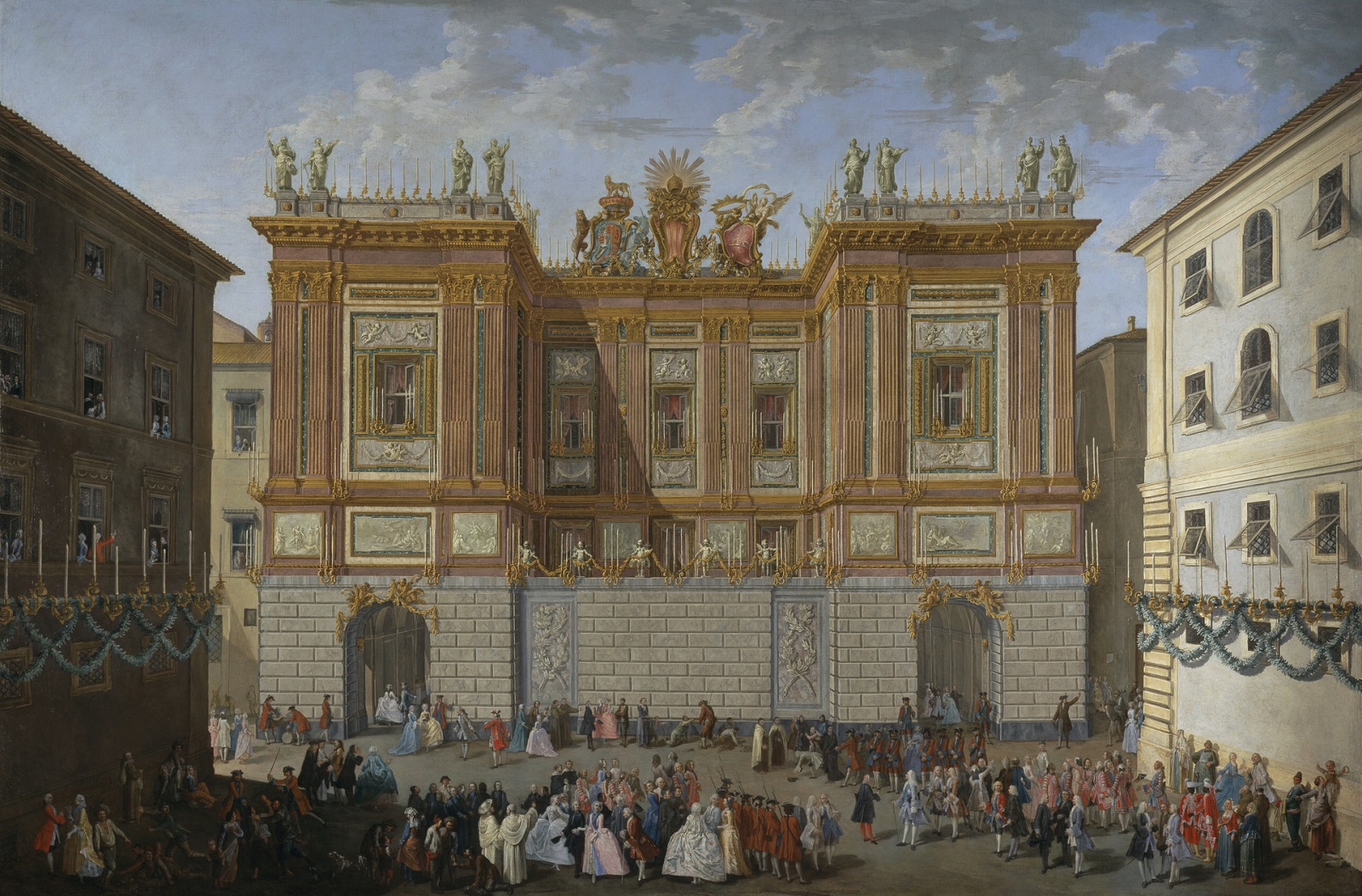
Fig. 4: PAOLO MONALDI (1720-1799), PUBLACCI, SILVESTRI (Louis de Silvestre?), Prince James receiving his son, Prince Henry, in front of the Palazzo del Re, circa 1747-48, oil on canvas, Scottish National Portrait Gallery, PG 3269.
Rosalba Carriera (1675-1757)
One of the earliest known portraits painted by a woman for the Stuart Court in Rome is of Clementina Sobieska, by Rosalba Carriera [13]. Dated from circa 1720-25, Clementina is shown in her wedding robes, wearing the pearls of her deceased mother-in-law, Mary of Modena.
Rosalba Carriera had a long and varied career, which numerous authors have done proper justice to (including Bernardina Sani (1988) and Neil Jeffares (2006)). Rosalba, as she is often known, gained success as a pastellist and miniature painter, and is said to have been the artist to introduce painting in watercolour on ivory, which would go on to become the most common medium for miniatures. Throughout her life, she was mainly based in Venice, and she was also admitted to the Accademia di San Luca in Rome in 1705, on merit, unusual for female artists at the time. She had strong connections with other important artists of the day, including Giovanni Antoni Pellegrini (1675-1741), who was married to her sister.
It was from Venice that Carriera was commissioned by the Stuart family to paint a portrait of the (then young) Young Pretender in pastel, during his semi-state visit there. The original was sent to Rome, and a copy was taken [14], and several other versions are known. One of these portraits appeared at auction in 2018 (fig 5). These later portraits were done in the more common medium for the artist- pastel on paper. The aforementioned miniature of their mother, however, is painted in watercolour on ivory.
Carriera’s works have received much attention, and rightfully so; her delicate pastel portraits and vast oeuvre demonstrate not only her skill but the recognition of this during the period, given that so many important social figures in Italy wished to have their portraits taken by her. By the time that the young Prince had his portrait taken, Carriera’s client base was well-established, and correspondence quotes her as being ‘old’, in reference to a warning that her work may not be done quickly, as she also ‘has a good dale [sic] of work on her hands’ [16].
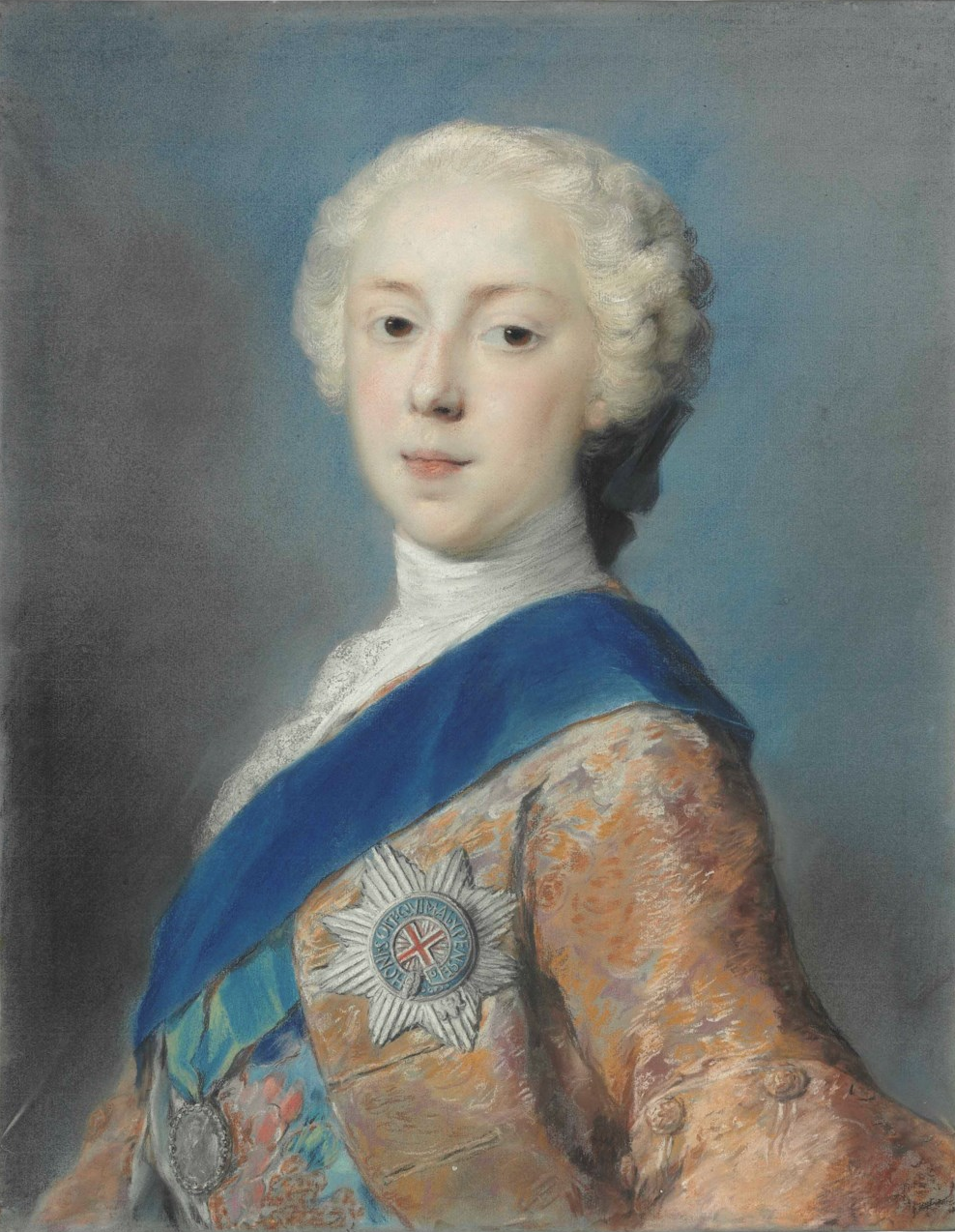
Fig. 5: ROSALBA CARRIERA (1675-1757), Portrait of Prince Charles Edward Stuart, half-length, wearing the Order of the Garter, pastel on blue paper, sold Christie’s, New York, 30 January 2018, lot 60.
Giovanna Fratellini (1666-1731)
Carriera was active in Venice at the time that Giovanna Fratellini was visiting, under the aegis of her patron, to paint the aunt of Maria Sobieska (our ‘Jacobite Queene’). In her home city of Florence, Giovanna worked for Cosimo III de Medici (1642-1723) and his daughter, Violante Beatrice of Bavaria (1673-1731). She had trained in pastel, oils, miniature, and enamel under Anton Domenico Gabbiani (1652-1726) and Domenico Tempesti (1655-1737).
It is more than possible that Fratellini’s introduction to the Stuart family came through her taking a portrait of Maria’s aunt. In the Stuart papers, it is recorded that in 1729 Fratellini was paid for five pictures (all miniatures) for the king. However, it seems that this was a second payment, and that Fratellini had painted other portraits for the king previously. More confusion arises in the fact that her son, Lorenzo Fratellini (c.1690s-1729) was also active in the period, and that some of the payments made to a ‘Fratellini’ are addressed to a man, rather than a woman. All the portraits painted by Giovanna for the Stuarts, whether or not there were more than five, are unlocated.
The portraits were part of a series of unsatisfactory commissions made by the king at the time. The Fratellinis had been called upon following an initial commission, which Montagu believed to have been to Torelli (see below). Once the Fratellini portraits had been completed, they were paid for, but with the comment that James did not intend to employ Giovanna again in the future- the exact words were that ‘it is not worthwhile to give the Peintress occasion to complain when probably he won't have further occasion to employ her [17].’. It may be for this reason that the portraits have disappeared since.
Despite her lack of success with the Stuarts, other patrons seemed to have been more pleased with her work. A self-portrait, in which she paints another portrait of her son Lorenzo, can be found in the Vasari Corridor at the Uffizi (inv. 1890, no. 2064) (fig. 6).
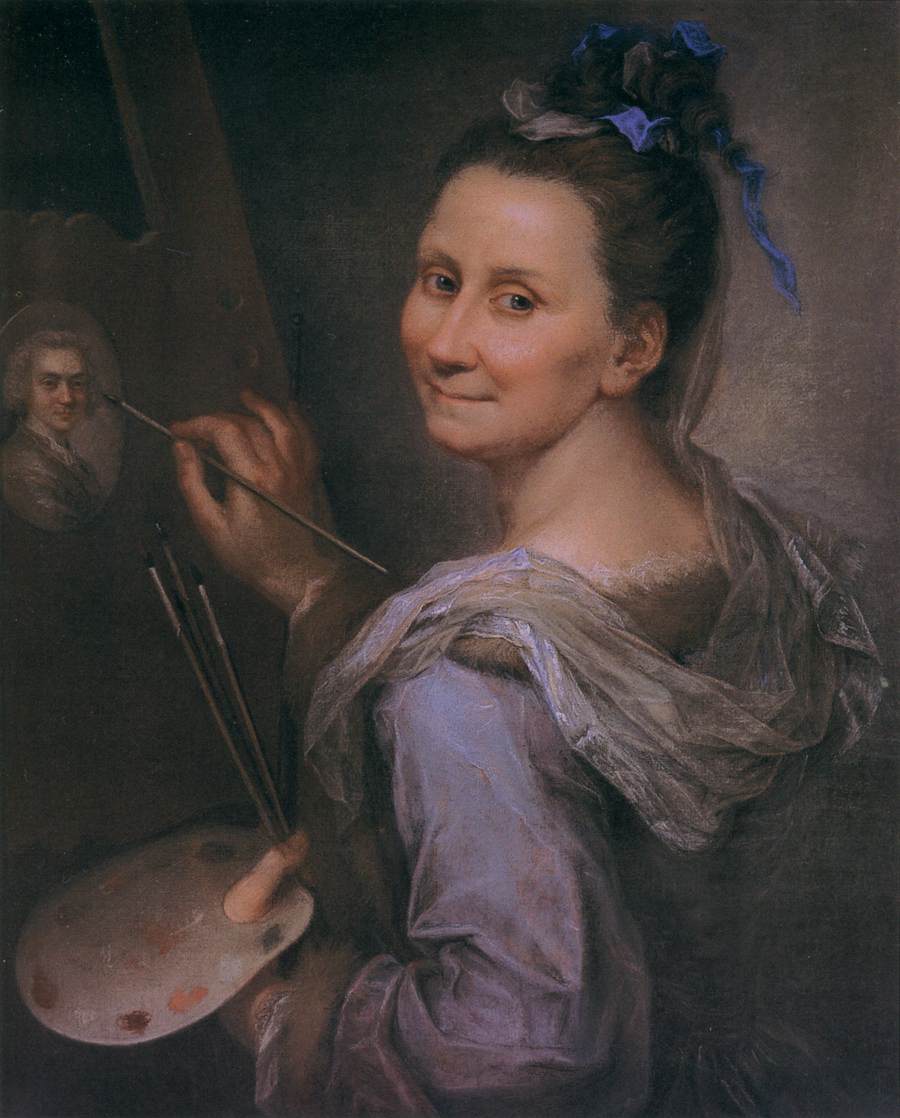
Fig. 6: GIOVANNA FRATELLINI (1666-1731), Self-Portrait, oil on canvas, Vasari Corridor, Uffizi Gallery, Florence, accession number 2064.
Lucia Casselini Torelli
The ‘Torelli’ whose commission Montagu believes Fratellini took over may well be Lucia Caselini Torelli (1673-1762). Torelli was a Bolognese artist, and the wife and mother of successful artists, Felice Torelli and Stefano Torelli, respectively.
There is no direct evidence that Torelli was a miniature painter or that she painted any portraits of the Stuarts, and it is possible that any suggestion of this simply comes from the fact that she was the female member of a family of artists. In the Stuart papers, only a ‘Peintre’, and not a ‘Peintress’, Torelli is mentioned. Corp, in an article on Carriera [18], lists that a portrait of Charles by Torelli was done in 1727; however, there is no reference to the source of this, and this statement is likely based upon the ‘Peintre’ listed in the Stuart papers. No portrait survives, so whether or not it was Lucia, her husband, or her son, responsible is still up for debate.
Orsola Urbani (fl. c.1738-1757)
As with Lucia Casselini Torelli, there are not many sources about Orsola (also known as Ursula) Orbani. It is believed that she was active between 1738 and the late 1750s, and during this time painted at least two portrait miniatures of Henry and one of the Young Pretender. Two of these- one of each brother- were recorded by Bodo Hofstetter in 2008 in his book on the collection of Emil S. Kern. The other portrait of Henry was sold previously through Philip Mould and was painted in 1738.
Urbani was a student of Pompeo Batoni (1708-1787), and it has been suggested that the pair collaborated on miniatures produced in the 1730s [19]. As has been the case for many of the artists discussed here, many of her works were copies of works by other (male) artists.
Veronica Stern (later Telli) (1717-1801)
Also enrolled at the St. Luca Academy in Rome, in a generation below Rosalba, was Veronica Telli, née Stern. Stern was born in Rome and died there. Her father was a German artist, Ignaz Stern (1679-1748), and her brother, Lodovico Stern (1709-1777) was also an artist [20]. Alongside Carriera, she was one of the most successful female Italian artists of her time.
She was commissioned to produce portrait miniatures by other notable families than the Stuarts, including the Royal family of Sardinia. A set of three miniatures of Maria Theresa of Aosta (1773-1832), Carl Emmanuel IV (1751-1819) as Prince of Piedmont, and Victor Emmanuel I (1759-1824), when Duke of Astoa, were sold at Christie's in 1973 [21]. Only a select number of works have been fully attributed to Stern. There are two notable sets of works painted by Stern for the Stuart Family. The first is a pair of portraits of the brothers, which have been exhibited twice historically, at the South Kensington Museum, London, in 1862, and the Exhibition of the Royal House of Stuart, New Gallery, London, in 1889. There has been some confusion surrounding this pair, as only the portrait of Henry was signed. It can be suggested, given how similar the pair are and that they were in the same collection, that both were painted in 1743, the date inscribed by Stern on the portrait of Henry.
The second is a set of four portrait miniatures of The Old Pretender, Maria Clementina, The Young Pretender, and Henry, Cardinal York. The set was painted in 1748, and all four are signed and dated by the artist. Montagu’s transcription of the Stuart archives suggests that the set was commissioned to be copied from four pictures produced by Pompeo Batoni in 1745. This original set was also formed of copies, and it is noted that Henry did not feel satisfied with the final product by Batoni as it was ‘not well copied from the original [22]’. Nevertheless, he sent these on to his brother, who had requested their production in the first place, when they were completed.
In a letter dated September 14, 1745, it is noted that Henry had requested to have Batoni’s portraits copied in miniature, and that Stern appears as ‘the Woman painter' (this is a conjecture by Montagu [23]), commissioned to create these. This set of four miniatures is extant and was last seen at auction in 2008 [24]. In contrast, no full set of portraits by Batoni is extant. In the set, it appears that the portrait of the Old Pretender was based on an original composition by Domenico Dupra, with elements of costume taken from a portrait by Anton Raphael Mengs (1728-1779). The portrait of Maria was taken from Martin van Meyten (1695-1770), and Charles and Henry’s portraits were based on likenesses by Louis Tocque (1696-1772) and Louis-Gabriel Blanchet (1705-1772). It is not possible to prove whether the combination of elements taken from different artists was taken directly from Batoni. Given that Stern signed the works, it is more than possible that these were her artistic combinations, which she then felt she had the right to sign as her own. Another work by Stern, sold through Philip Mould & Company, of a Personification of Spring [25], is known to be an original composition, and therefore credit should be given to her for the ability to produce work of her own imagination.
Other works by Stern have been seen on the market in the past, and a portrait of the Old Pretender attributed to her can be found in the National Galleries of Scotland: Portrait [26].
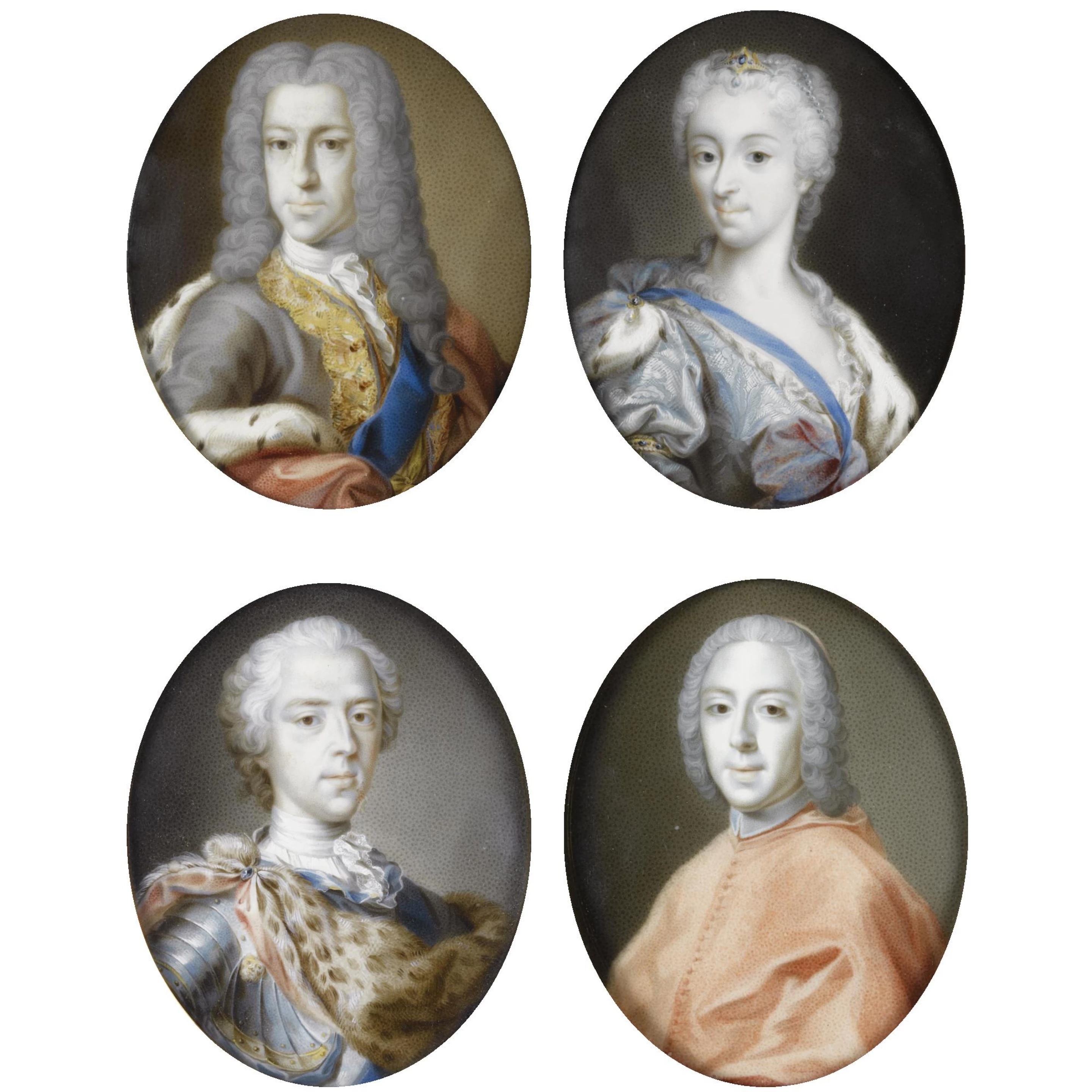
Fig. 7: VERONICA STERN (later TELLI) (1717-1801), A set of four portraits of Prince James Francis Edward Stuart, 'The Old Pretender' (1688-1766); Maria Clementina Stuart, née Sobieska (1702-1735); Charles Edward Stuart, 'The Young Pretender' (1720-1788); Henry Benedict Stuart, 'Cardinal York' (1725–1807), sold Sotheby’s, London, 4 December 2008, lot 104.
Coda
Both the Old and Young Pretenders were keen to employ female artists at their exiled courts. It has been demonstrated here that it is often difficult to trace the lives and works of these artists, and a much larger body of work exists on the oeuvres of their male counterparts from this period. A recent visit to the National Portrait Gallery in Edinburgh has only reinforced this- the author was only able to find one portrait of the Stuarts by a female artist on display, a portrait miniature of the Old Pretender, circa 1704, by Chéron (fig. 8)[27]. One can only hope that, through further research, a larger number of extant examples of their work will be revealed and correctly attributed.
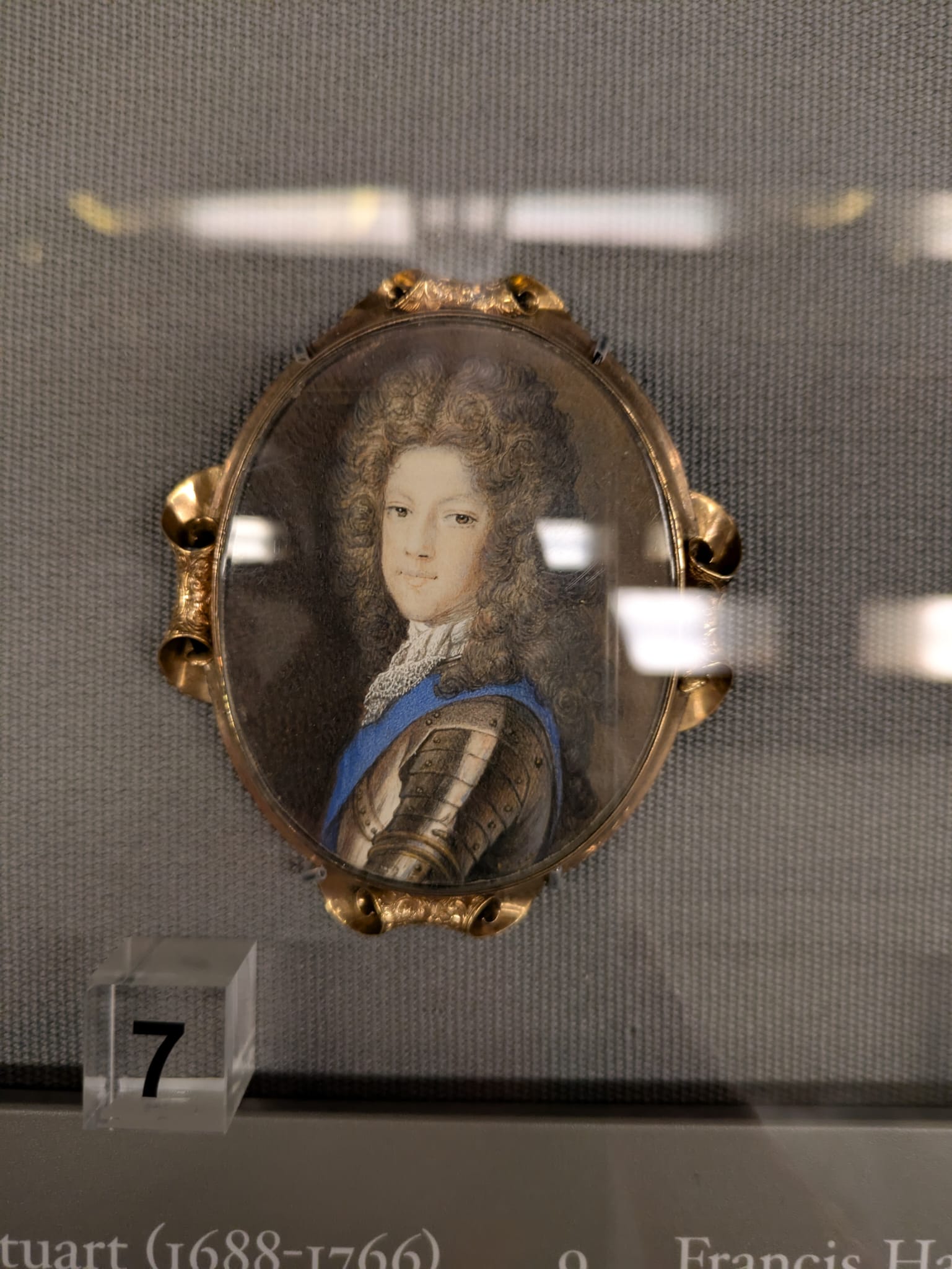
Fig. 8: ANNE MARIE BELLE (NÉE CHÉRON) (1663-1718), Prince James Francis Edward Stuart (1688-1766), 1704, National Galleries of Scotland: Portrait, acsession number PG 1210, author's own image.
[1] This later became ‘The Old Pretender’, following the birth of Charles Edward Stuart.
[2] Charles had one daughter, Charlotte Stuart (1753-1789), who was illegitimate and the daughter of Charles’ mistress, Clementina Walkinshaw (1720-1802).
[3] The Stuart Papers cover c.1689-1800, and are held in the Royal Archives at Windsor.
[4] Corp is the authour of numerous works on the Stuarts, including The King over the Water: Portraits of the Stuarts in Exile (National Galleries of Scotland, 2001), A Court in Exile: The Stuarts in France, 1689-1718 (Cambridge University Press, 2004), and The Stuarts in Italy, 1719-1766: A Royal Court in Permanent Exile (Cambridge University Press, 2011).
[5] For a more in-depth discussion of Mary’s patronage of and friendship with female creatives, see Breeze Barrinton’s new book, ‘The Graces: The Extraordinary Untold Lives of Women at the Restoration Court’ (2025).
[6] Corp suggests that the size of the paintings would demonstrate importance (Corp, 2001, p.34).
[7] Note the use of ‘masters’ here- the term used to define the ‘greats’ and teachers of painting has always been, and still is, gendered.
[8] At Sizergh Castle, circa 1708-10, NT 998407.
[9] See https://www.cittametropolitana.bo.it/pariopportunita/Boissiere_de_la_Jacqueline
[10] See https://theframeblog.com/tag/boite-a-portrait/ for more details.
[11] L. Schidlof, The Miniature in Europe, 1964, vol.I, p.91.
[12] As they were referred to by the Stuarts at the time, in the Stuart papers.
[13] With Philip Mould and Company, 2012.
[14] It is not certain whether this copy was taken by Carriera or another artist. Correspondence mentions ‘pictures’ being sent for copies (Wortley, vol. 200, no. 113).
[15] According to the catalogue note for the version sold at Christie’s, London, 30 January 2018, lot 60 (fig, 5)
[16] From a letter from The Old Pretender to Owen O’Rourke, dated August 9th, 1737, Reproduced in C. S. Wortley, Portraits of the Stuarts in Exile, (unpublished thesis), 1948, section II, p.7.
[17] Wortley (1948), section I, p.26.
[18] E. Corp, ‘The recently discovered portrait of Prince Charles Edward Stuart by Rosalba Carriera (1673–1757)’, The British Art Journal, Vol. 21, No. 2 (Autumn 2020), pp. 54-59 (6 pages), p.59, 3.
[19] Suggested by a catalogue note for another work by Urbani sold through Philip Mould, https://historicalportraits.com/artworks/3821-orsolo-urbani-portrait-minature-of-saint-cecilia-playing-a-viol-1757/, accessed 20/08/2025.
[20] Corp lists a portrait by Lodovico in The Stuart Court in Rome (2023) of Maria. This was in the Studio del Mosaico of the Vatican, who commissioned it, until 1979 (Corp, 22, no.44.).
[21] Sold Christie’s, London, 20 February, 1973, lots 118-120. Lot 121 was also attributed to Telli. The first three lots are similar in composition, implying that they were commissioned as a set.
[22] Wortley (1948), Section III, p.8. It is not clear what the original was, and it should be noted that Henry believed the portrait to be ‘fine’ in itself.
[23] Wortley, Section III, 10.
[24] Sotheby’s, London, Early British Drawings, Watercolours And Portrait Miniatures, 4 December 2008, lot 104 (see figure 7).
[25] See https://historicalportraits.com/artworks/5650-veronica-stern-telli-a-personification-of-spring-c.-1740/.
[26] Accession number PG 1527.
[27] This is a slightly earlier work than that recently sold by the Limner Company, accession number PG 1210.







